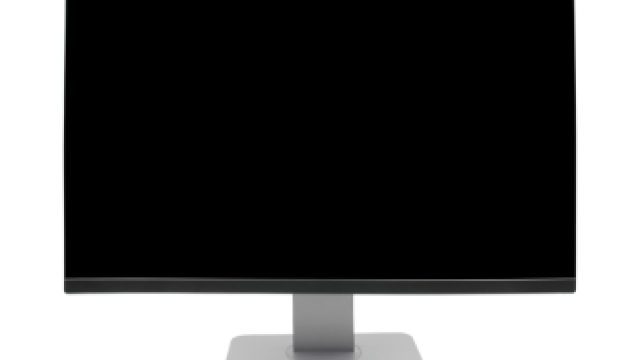Having pressure spots on your LCD screen can be frustrating and annoying. These pesky marks can hinder your viewing experience and make it difficult to enjoy your favorite movies, shows, or games.
In this article, we will delve into the world of LCD pressure spots, exploring the causes behind them, and most importantly, providing you with effective solutions to fix them.
So, say goodbye to those irritating spots and get ready to enjoy a spotless LCD screen once again!
Troubleshoot LCD Pressure Spots
Before we jump into the solutions, let’s first troubleshoot the issue. Pressure spots on LCD screens are often caused by uneven pressure applied to the screen.
This can happen when you accidentally press down too hard on the screen or when something heavy rests on it for an extended period.
Even storing your device in a crowded bag with other items can lead to pressure spots over time.
Understanding the root cause will help us tackle the problem effectively.
Spotless LCD Screen Solutions
Inspecting Your Screen
The first step in fixing pressure spots is to inspect your LCD screen carefully. Look for any visible marks or spots on the display.
Try turning the screen off and gently wiping it with a soft, microfiber cloth. Sometimes, debris or smudges can mimic pressure spots, and a simple cleaning may solve the issue.
Applying Gentle Pressure
If you notice any apparent pressure spots, try applying gentle pressure on the affected area.
Use your fingers or a stylus to press lightly on the spot while the screen is turned off.
In some cases, this can help redistribute the liquid crystals, reducing the visibility of the pressure marks.
Avoiding Direct Pressure
To prevent further pressure spots, be mindful of how you handle your LCD screen.
Avoid pressing too hard or using sharp objects on the display. When storing your device, place it in a protective case or sleeve to prevent accidental pressure from external objects.
Repairing LCD Pressure Marks
DIY LCD Pressure Spot Repair
If the gentle pressure method doesn’t yield satisfactory results, you can attempt a DIY repair. One popular method is the “pixel massage.”
Turn off your LCD screen and apply a soft, damp cloth to the pressure spot. Gently massage the area in a circular motion for a few minutes.
This technique can sometimes revive stuck pixels and alleviate pressure marks.
Using Screen Repair Kits
Various screen repair kits are available in the market, specifically designed to fix LCD pressure spots. These kits typically include a suction cup tool and adhesive strips.
The suction cup helps lift the screen slightly, allowing you to insert the adhesive strips and release pressure from the affected area.
Related Article: Where are HP Laptops Made: Unraveling HP’s Laptop Origins
Fixing Pressure Points on LCD
Freezing Method
Yes, you read that right! The freezing method involves placing your device in a sealed plastic bag and then putting it in the freezer for about 15 to 20 minutes.
This approach may sound unconventional, but some users have reported success in fixing pressure spots using this method.
However, exercise caution and avoid condensation buildup by allowing the device to return to room temperature before turning it on.
Rubber Pencil Eraser
Another interesting DIY method involves using a clean rubber pencil eraser.
Gently rub the pressure spot with the eraser, exerting minimal pressure.
This technique can help dislodge any trapped liquid crystals, reducing the visibility of the mark.
Quick Fixes for LCD Pressure
Applying Heat
Applying gentle heat to the pressure spot can sometimes work wonders.
Use a hairdryer on a low heat setting or a heat gun (set to a low temperature) and hover it a few inches away from the affected area.
Be cautious not to overheat the screen or cause any damage.
Screen Tapping
In some cases, tapping the pressure spot lightly with your fingers can help disperse the liquid crystals, making the spot less noticeable.
Be sure not to use excessive force, as this may lead to further damage.
Say Goodbye to LCD Spots
Screen Replacement
If all else fails and the pressure spot remains stubborn, you may consider replacing the LCD screen.
Consult a professional technician or the manufacturer’s service center for guidance on obtaining a compatible replacement and performing the installation.
Resolve LCD Pressure Patches
Preventing Future Pressure Spots
Prevention is always better than cure! To avoid future pressure spots, consider investing in a high-quality screen protector.
A screen protector acts as a protective barrier, absorbing any pressure or impact that your device might face.
Handle with Care
Be mindful of how you handle your devices with LCD screens.
Avoid placing heavy objects on top of them, and store them in a secure and padded environment to prevent accidental pressure.
Related Article: Why Are There Lines on My Computer Screen
DIY LCD Pressure Spot Repair
Rice Bag Method
An unconventional yet surprisingly effective method is the rice bag technique.
Fill a small cloth bag with uncooked rice and heat it in the microwave for a minute or two. Make sure it’s warm, not scalding hot.
Then, place your LCD device in the bag and let it sit for a couple of hours. The rice’s gentle warmth may help alleviate pressure spots.
Patience is Key
Remember that some pressure spots may take time to disappear completely.
Be patient and consistent with your chosen repair method before exploring more drastic options.
Clearing LCD Pressure Marks
Manufacturers’ Warranty
If your device is still under warranty, contact the manufacturer’s customer support for guidance on repairing or replacing the LCD screen.
Warranty coverage may vary, but it’s worth exploring this option before attempting any DIY fixes.
Tips for LCD Spot Removal
Soft Cloth and Mild Cleaner
Before trying any other repair methods, start with the basics. Clean your LCD screen with a soft, lint-free cloth and a mild cleaner.
Avoid harsh chemicals that may damage the screen’s protective coating.
Eliminate LCD Pressure Spots
Professional Repair Services
If you’re not comfortable attempting a DIY repair or if the pressure spots persist despite your efforts, seek the help of professional repair services.
They have the expertise and specialized tools to handle LCD pressure spots effectively.
LCD Pressure Spot Guide
Educate Yourself
Understanding LCD technology and the mechanics behind pressure spots can help you make informed decisions when trying to fix them.
Take the time to read user manuals and online resources to familiarize yourself with your specific device.
Fixing Pressure on LCD Screens
Stay Updated
Keep an eye out for any software updates or patches released by your device’s manufacturer.
Sometimes, these updates may include bug fixes related to LCD pressure spots.
Easy LCD Spot Remedies
Microfiber Cloth Maintenance
Regularly clean your LCD screen with a microfiber cloth to prevent dust and debris buildup.
This simple practice can go a long way in maintaining a spotless display.
LCD Screen Pressure Fixes
Avoid Extreme Temperatures
Exposing your LCD device to extreme temperatures, whether hot or cold, can exacerbate pressure spots.
Keep your device in a moderate temperature environment to minimize the risk of developing new pressure marks.
- FAQs About How to Fix Pressure Spots on LCD Screen
Do LCD pressure marks go away?
LCD pressure marks might disappear over time, especially if the pressure applied was not severe.
However, there is no guarantee they will completely vanish. The recovery depends on the extent of the damage and the underlying cause.
What does pressure damage look like on TV?
Pressure damage on a TV appears as discolored areas or irregular patterns on the screen, often resembling patches or spots.
These marks are usually visible when the TV is turned on and can affect the picture quality.
How can I fix my LCD screen without replacing it?
You can try massaging the affected area gently or applying slight pressure to even out the LCD layers.
Use a microfiber cloth and be cautious not to exert too much force. However, there is no foolproof method, and the success of this approach varies.
How do you fix a black spot on an LCD screen?
Fixing a black spot on an LCD screen can be challenging and might require professional assistance.
It could be caused by dead pixels or other underlying issues. Contact the manufacturer or a certified technician for repair options.
Can LCD bleed be fixed?
LCD bleeding can’t be entirely fixed without replacing the affected display.
This issue occurs when light leaks from the edges of the screen, resulting in uneven brightness or color distortion.
Replacing the LCD panel is often the only viable solution.
Can LCD damage be fixed?
Minor LCD damages like scratches can sometimes be remedied using screen repair kits.
However, more significant damages, such as cracks or malfunctioning pixels, usually necessitate screen replacement.
What are the three most common early signs of pressure damage?
- Discoloration or irregular patterns on the screen.
- Visible patches or spots when the display is on.
- Faint, ghost-like images that persist even when the screen changes.
What causes damage to LCD screens?
LCD screens can be damaged due to various reasons, including excessive pressure, impact, rough handling, temperature extremes, and exposure to moisture.
Scratches from abrasive cleaning or sharp objects can also cause damage.
What three signs show early pressure damage?
- Light patches or spots on the screen.
- Faint, blurry lines or images.
- Distorted or uneven colors on specific areas of the display.
How do you get rid of LCD bleeding?
Unfortunately, there is no DIY method to eliminate LCD bleeding.
The only effective solution is to replace the damaged LCD panel with a new one, which should be done by a qualified technician.
How do you remove marks from LCD screens?
To remove marks from an LCD screen, use a soft, lint-free cloth slightly dampened with water or a gentle cleaning solution.
Wipe the screen gently in a circular motion. Avoid using harsh chemicals or excessive pressure.
How do you stop black LCD from spreading?
If you notice a black spot on your LCD screen, it’s essential not to touch or press on the area.
Continued pressure can exacerbate the issue and spread the damage further. Seek professional repair to address the problem properly.
What does a broken LCD screen look like?
A broken LCD screen may display various issues, such as cracks, shattered glass, black spots, or distorted images.
In severe cases, the screen might be completely unresponsive or show a jumbled mess of colors.
How much does it cost to fix the LCD screen on a phone?
The cost of repairing an LCD screen on a phone can vary depending on the phone model and the extent of the damage.
It typically ranges from $50 to $200 for most smartphones. However, high-end or flagship devices might have more expensive repairs.
Final Thoughts About How to Fix Pressure Spots on LCD Screen
Fixing pressure spots on an LCD screen can be a tricky task. While some minor spots may fade over time, there’s no guaranteed solution to make them disappear completely.
Gentle massaging or applying slight pressure might help, but it’s not a foolproof method. If the spots persist or worsen, seeking professional assistance is advisable.
Avoid using sharp objects or harsh chemicals, as they can further damage the screen.
Prevention is always better than cure, so handle your devices with care, avoiding excessive pressure and rough handling.
Regularly clean the screen with a soft, lint-free cloth to maintain its condition and prevent potential damage.


